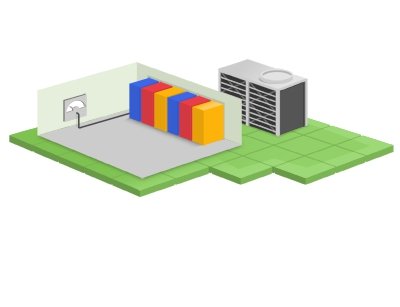If developed further (and all indications are that it will be), Google’s Infrastructure-as-a-Service (IaaS) offering – Google Compute Engine – will more than tip the scales of the public-cloud market. It will make the gorilla in the market, Amazon Web Services, move over.
Why? Infrastructure. While we know little about Amazon’s infrastructure – the company is more tightlipped about it than the ever-secretive Google – it is safe to assume Google’s global network of mega-data centers is best-of-breed. While it holds a number of patents for esoteric (wave-powered floating barge) and not-esoteric-anymore (containerized IT modules connected to a central spine) data center designs, Google said on many occasions it has gained the biggest infrastructure advantage by anally following best practices.
Traditionally, companies will follow best practices in some areas while cutting corners or sticking with legacy in others. Google, judging by its presentations at numerous data center events over the past couple of years, does everything meticulously ‘by the book’. Chris Malone, principal engineer at Google, said in one presentation the company did not really do anything the data center industry did not know about. The overall recipe is simple, according to Malone: fix cooling, optimize power distribution and backup, measure and improve. With a company the size of Google, this simple recipe produces savings worth billions of dollars.
This is why when Craig McLuckie, lead product manager at Google Compute Engine, outlines what will make Compute Engine a heavyweight in the market, infrastructure efficiency comes up first. Google constantly makes sure it pays as little as possible for its data centers while getting the best necessary performance, and now anybody can take advantage of this.
“Google runs some very big internet-scale businesses, and to be successful in these businesses we need really large infrastructure,” McLuckie said during a presentation at the Google IO conference in San Francisco in June, when the company announced its IaaS play. “We’ve also focused on refinement of every process in our data centers. What we’ve brought together is this incredible power, this incredible scale and incredible efficiency. And now you can access that and run your processes on our infrastructure.”
Variety – lacking for now
Compute Engine was launched into beta in June. At the moment, the offering does not come close to Amazon’s much more mature Elastic Compute Cloud (EC2). So far, EC2 wins on the variety of compute instances available. They range from the micro instances with 613MB of memory, two ECUs (Amazon’s uniform unit of CPU power, one ECU’s capacity being 1.0-1.2GHz Intel Opteron or 2007 Xeon processor) and cloud storage per instance to the newest High I/O instances with 60.5GB of memory, 35 ECUs and 1024GB of local SSD storage, not to mention 10-Gigabit-Ethernet connectivity.
Google offers virtual machines (VMs) with one, two, four or eight virtual cores with 3.75GB of memory per core. At the roll-out it aimed the service at higher-end workloads, offering local disk storage.
EC2 also wins on the variety of operating systems users can choose from: a total of nine, majority being different Linux distributions plus Windows Server. Compute Engine, on the other hand, offers two Linux distros: Ubuntu and CentOs.
For a fair comparison, one needs to run the same workload on both, which is exactly what Zencoder, a Software-as-a-Service provider of video encoding and transcoding applications did. The company ran a video-transcoding workload and transferred some files on each of the two platforms.
Instances in Amazon’s cloud clearly outperformed Compute Engine in transcoding, and file transfer was faster within Amazon’s cloud storage. Zencoder found the costs to run the transcoding job on each of the clouds comparable. This of course may change as Google adds more instance types and further develops the offering.
More worry for Google
Google is not the only newcomer to the market. Microsoft launched IaaS services under the Windows Azure brand in June, and HP launched its own public compute, storage and content delivery network (CDN) services into beta in May. Both companies are leading innovators in data center design, and both operate data center infrastructures that span the world. While it will be hard for Google to compete with Amazon’s already established authority in the space, it will have to fight hard with the other two infrastructure heavyweights for market share.
All of this begs the question: is everybody with a global data center infrastructure going to get into the IaaS space? There has already been speculation online that Facebook may do it. Sure, they are a social-networking company but Amazon, prior to 2006, was just a website where you went to buy cheap stuff.
A version of this article first appeared in the 24th issue of the DatacenterDynamics FOCUS magazine. Visit the FOCUS registration page for a free subscription.

